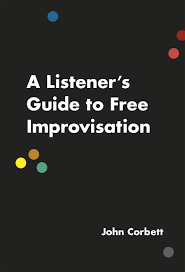
Like many listeners to this kind of music (and players) I’m learning as I go. And in that learning process, there’s a constant danger of stagnation… of understanding, of vocabulary, of response. This book, by Chicago music writer, curator and producer, John Corbett, is the solution.
Short, accessible, friendly, it’s an invaluable companion on the free improvisation journey. If you’re new to the ‘genre’, it’ll get your started. If you’re stuck or frustrated, it’ll reignite your sense of wonder and enthusiasm. And if you’ve been listening for decades, it may still have something to teach you. It’s fun and, above all, practical.
If Derek Bailey’s seminal “Improvisation: Its Nature ad Practice in Music” was a fascinating insight into the heads of improvising musicians, intriguing, insightful and occasionally a little dull. This short handbook is an invaluable and practical field guide. It’s not about, “What’s going on in their heads when they make those funny sounds?” but rather, how to listen to the funny sounds and get the maximum satisfaction and enjoyment from them.
It’s not technical, not academic, not “A Musicologist’s Guide to…”, it’s a listener’s guide. And as a guide, John Corbett comes across as the absolute opposite of snooty know-it-all pretension. He’s knowledgeable and expert, and distils that knowledge and expertise into a friendly, straightforward and down to earth voice.
He talks about the barriers which can make the listening experience difficult for newcomers (or even oldcomers): lack of rhythm, uncertain duration, pointing out that these touchstones of more structured and planned music don’t apply here. Instead, it’s all in the dynamics: who is doing what, with whom, in response to whom, despite whom, in direct opposition to whom? And so on.
Along the way, he covers ambiguity, transitions, watching vs. listening, the audience, and developing a personal vocabulary (as a listener). Corbett also distinguishes between free improvisation, structured improvisation, free jazz, and noise music, without boxing any of them in with artificial categories. There are even a few exercises to help you tune in your ear/brain, so, if you’re that way inclined, remember to take pen and paper to the next gig.
And of course, there are a few playful lists of recordings and artists to check out – it’s always fun to play the Who have I heard? game!
Quite simply, if you have any interest in free improvisation, whether you’ve listened it for years or not at all, this is a wonderful book. Wish I’d had it years ago. Glad I have it now.
University of Chicago Press
ISBN 978-0-226-35380-7
172pp
